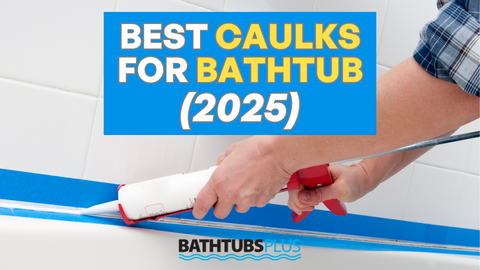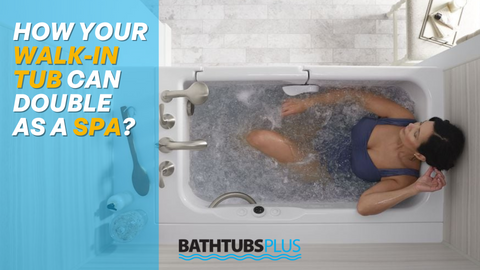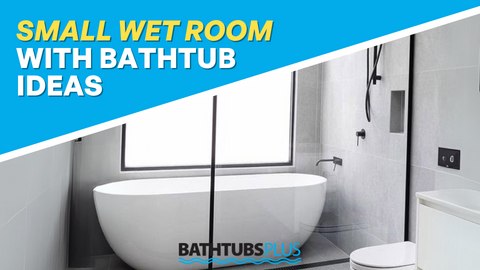Choosing the right bathtub can be an overwhelming task, given the wide variety of options available in the market. The key is to take it step-by-step, and you can start off by deciding on the bathtub material you most prefer.
Cost, durability, maintenance, and even appearance– these are some of the factors you have to consider when weighing your options. It’s best if you understand first the differences, as well as the pros and cons of common bathtub materials, before determining which best suits your needs.
Types of Common Bathtub Material:
1) Acrylic Bathtub

One of the most commonly used bathtub materials is acrylic, and it’s popular for a reason. Acrylic bathtubs are made from vacuum-formed acrylic sheets, which are typically reinforced with fiberglass.
Acrylic tubs are known for their lightweight property, hence they are relatively easy to install and maneuver around a space. Moreover, since it’s lightweight, it no longer needs support and can be conveniently placed on two-storey homes compared to the heavier models.
Despite their versatility, acrylic tubs are not lacking in quality. Acrylic bathtubs are warm to the touch, making them more relaxing to soak in. They are available in a wide range of options, not to mention that they are also more affordable compared to other bathtub materials.

In the long run, you can also save on tubs made of acrylic because they are generally low-maintenance and repairable. Acrylic is a non-porous material, meaning it's resistant to grime, mold, and mildew. Still, it has to be adequately maintained to avoid common acrylic problems like staining, cracking and warping. It can be sensitive to abrasive cleaners too, hence gentle cleaning is advised.
If you want acrylic for your bathtub material, you'll never go wrong with American Acrylic tubs-- one of our best selling bathtub brands. It comes in different sizes, styles and installations so you can have the flexibility in planning your bathroom layout.
2) Fiberglass Bathtubs

Fiberglass bathtubs, sometimes called fiberglass-reinforced plastic (FRP), are made from layers of tiny interwoven fiberglass heated and molded into a bathtub shape, then coated with gel coat resin which protects the tub from light scratches and impact.
Similar to acrylic, fiberglass is one of the cheapest and lightest bathtub materials, meaning you can have more flexibility in terms of purchase and installation. This flexibility however comes at a cost as fiberglass bathtubs tend to be less durable than other tub materials. It has low resistance to heavy impacts, which makes it more prone to damage. The material is also porous, so it has relatively poor heat retention.
Acrylic Tub vs. Fiberglass Tub
Like acrylic tubs, the light material of fiberglass is ideal for two-storey homes, especially if you plan to place it on the upper level of the house. Both are easy to maneuver compared to cast iron and steel tubs.
When we talk about pricing, acrylic tubs are more expensive than fiberglass due to the way acrylic is manufactured. Acrylic requires a more hands-on process as it is manually stretched over the bathtub mold. Fiberglass, on one hand, can be conveniently sprayed with gel coating over the mold.
In terms of maintenance, fiberglass is more prone to stains, molds and mildew, so proper upkeep is a must.
3) Cast-iron Bathtubs /Enameled Cast Iron Bathtub

Cast iron bathtubs, similarly known as enameled cast iron tubs, are made from melted liquid iron molded into a tub’s shape, and then coated with a thick layer of enamel. Cast iron tubs are pure iron, making them one of the most durable bathtub material available.
Apart from its core material, the enamel coating used on this tub resists chipping, scratching and denting. In the unlikely instance that the enamel does sustain some damage, it can easily be resurfaced.
Cast iron tubs like from the brand Cambridge Plumbing can be in good shape for years and even decades. Its heavy material is also great at retaining water heat. One downside of cast-iron tubs is that they’re heavier than most tubs. Purchasing this tub means you have to prepare for its floor support during installation.
4) Enameled Steel Bathtubs
Enameled steel bathtubs, a.k.a porcelain on steel tubs or enameled steel tubs, are made from a stamped sheet of steel that is molded into a bathtub shape and later covered in heat-fused porcelain enamel. The enamel coating keeps the tub’s surface smooth and glossy while making it scratch resistant and easy to maintain. The material is also durable and resistant to acid, corrosion and abrasion.
Cast Iron Vs. Enameled Steel Bathtubs
Cast Iron and Enameled Steel Tubs are quite similar for they are both finished with an enamel coating. The major difference lies in the core material used. Steel tubs are lightweight compared to cast iron tubs because steel is lighter than the heavy iron material of cast iron bathtubs.
Though lighter, enameled steel tubs are slightly less durable. Further, the shape and size selection is quite limited for this tub material. Another downside to this material is it’s possible for the underlying steel to rust particularly if the enamel coating becomes chipped or cracked.
BEST BATHTUB MATERIAL REVIEW : OUR VERDICT
| Acrylic | Fiberglass | Cast-Iron | Steel | |
|---|---|---|---|---|
| Easy to install | Yes | Yes | No | Yes |
| Easy to clean | Yes | Yes | Yes | Yes |
| Scratch Resistant | No | No | Yes | Yes |
| Stain Resistant | No | No | Yes | Yes |
| Heat Retention | Good | Poor | Excellent | Poor |
| Weight | Lightweight | Lightweight | Heavy | Heavy |
| Price | Cheaper | Cheaper | More Expensive | More Expensive |











